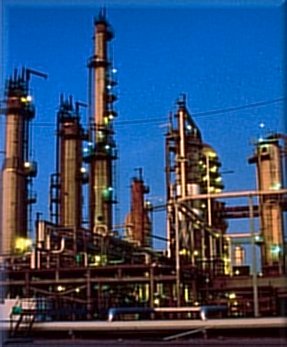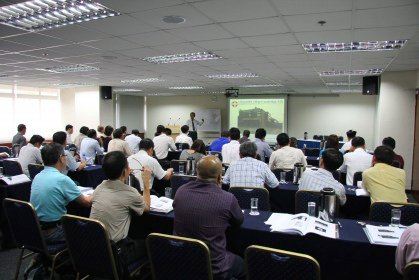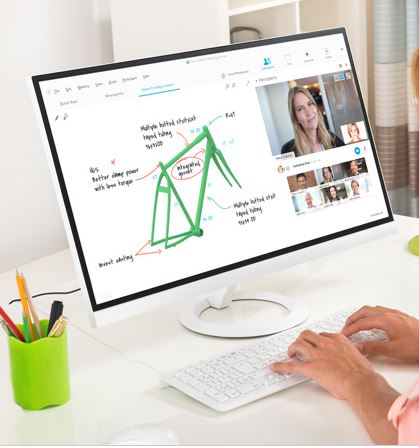|
 |
|
Home |
Consulting |
Training |
Expert Witness |
Failure Analysis |
Design Review |
Corrosion Test |
Corrosion Software |
Protective Coatings |
Materials Selection |
Cathodic Protection |
>>> |
|
API 571 Damage Mechanisms Affecting Fixed Equipment in the Refining Industry |
|
Course Outline |Who Should Attend |Registration |In-House |On-Demand |Online Courses |PPT Slides+Testbank |Course List
|
Why WebCorr
|
|
Course Overview |
|

API
RP 571-2020 (3rd Edition) is the latest edition that describes damage mechanisms affecting equipment
in the refining and petrochemical industries. A key first step in
managing equipment safety and reliability is the identification and
understanding of the various damage mechanisms. Proper identification of
damage mechanisms is also required when implementing the API Inspection
Codes (API 510, API 570, API 653) and in carrying out risk based
inspection (RBI) per API 580 and API 581. When performing a
fitness-for-service (FFS) assessment using API 579, the damage
mechanisms need to be understood and need to be considered when
evaluating the remaining life.
This 5-day corrosion short course aims to
provide the participants with a thorough understanding of the various
damage mechanisms contained in the latest edition of API RP 571-2020
(released in March 2020) that can affect process equipment, the type and extent of damage that
can be expected, and how this knowledge can be applied to the selection
of effective inspection methods to detect, size and characterize the damages.
The 67 damage mechanisms to be discussed in this API RP 571-2020
(3rd Edition) training course
are common to a variety of industries including refining and
petrochemical, pulp and paper, and fossil utility:
|
DM# |
Damage Mechanism (API RP 571-2020) |
DM# |
Damage Mechanism (API RP 571-2020) |
|
1 |
Sulfidation |
36 |
Sulfuric Acid Corrosion |
|
2 |
Wet H2S Damage (Blistering/HIC/SOHIC/SSC) |
37 |
Hydrofluoric Acid (HF) Corrosion |
|
3 |
Creep / Stress Rupture |
38 |
Flue Gas Dew Point Corrosion |
|
4 |
High Temperature H2/H2S Corrosion |
39 |
Dissimilar Metal Weld (DMW) Cracking |
|
5 |
Polythionic Acid Stress Corrosion Cracking |
40 |
Hydrogen Stress Cracking in HF |
|
6 |
Naphthenic Acid Corrosion (NAC) |
41 |
Dealloying (Dezincification / Denickelification) |
|
7 |
Ammonium Bisulfide Corrosion |
42 |
CO2 Corrosion |
|
8 |
Ammonium Chloride Corrosion |
43 |
Corrosion Fatigue |
|
9 |
Hydrochloric Acid (HCl) Corrosion |
44 |
Fuel Ash Corrosion |
|
10 |
High Temperature Hydrogen Attack (HTHA) |
45 |
Amine Corrosion |
|
11 |
Oxidation |
46 |
Corrosion Under Insulation (CUI) |
|
12 |
Thermal Fatigue |
47 |
Atmospheric Corrosion |
|
13 |
Sour Water Corrosion (Acidic) |
48 |
Ammonia Stress Corrosion Cracking |
|
14 |
Refractory Degradation |
49 |
Cooling Water Corrosion |
|
15 |
Graphitization |
50 |
Boiler Water / Condensate Corrosion |
|
16 |
Temper Embrittlement |
51 |
Microbiologically Influenced Corrosion (MIC) |
|
17 |
Decarburization |
52 |
Liquid Metal Embrittlement (LME) |
|
18 |
Caustic Stress Corrosion Cracking |
53 |
Galvanic Corrosion |
|
19 |
Caustic Corrosion |
54 |
Mechanical Fatigue |
|
20 |
Erosion / Erosion-Corrosion |
55 |
Nitriding |
|
21 |
Carbonate Stress Corrosion Cracking (ACSCC) |
56 |
Vibration-Induced
Fatigue Withdrawn, See DM#54 |
|
22 |
Amine Cracking |
57 |
Titanium Hydriding |
|
23 |
Chloride Stress Corrosion Cracking |
58 |
Soil Corrosion |
|
24 |
Carburization |
59 |
Metal Dusting |
|
25 |
Hydrogen Embrittlement |
60 |
Strain Aging |
|
26 |
Steam Blanketing Withdrawn, See DM#30 |
61 |
Sulfate Stress Corrosion Cracking Withdrawn |
|
27 |
Thermal Shock |
62 |
Phosphoric Acid Corrosion |
|
28 |
Cavitation |
63 |
Phenol (carbolic acid) Corrosion |
|
29 |
Graphitic Corrosion of Cast Irons |
64 |
Ethanol Stress Corrosion Cracking |
|
30 |
Short term Overheating - Stress Rupture (incl. Steam Blanketing) |
65 |
Oxygen-Enhanced Ignition and Combustion |
|
31 |
Brittle Fracture |
66 |
Organic Acid Corrosion of Distillation Tower Overhead Systems |
|
32 |
Sigma Phase Embrittlement |
67 |
Brine Corrosion |
|
33 |
885 °F (475 °C) Embrittlement |
68 |
Concentration Cell Corrosion |
|
34 |
Spheroidization (Softening) |
69 |
Hydrofluoric Acid Stress Corrosion Cracking of Nickel Alloys |
|
35 |
Stress Relaxation Cracking (Reheat Cracking) |
70 |
Oxygenated Process Water Corrosion (Non-boiler) |
Changes in API RP 571-2020 (3rd Edition) vs. API RP 571-2011 (2nd
Edition)
This corrosion short course is
available for in-house training, online and distance learning worldwide.
It can also be customized to meet the specific needs of your
organization.
|
|
|
|
Course Outline |
|
|
|
1. Introduction to Corrosion
1.1 Corrosion: Definition and
Examples
1.2 Basic Concepts in
Electrochemistry
1.3 Why Do Metals
Corrode
1.4 Kinetics: the Rate
of Corrosion
1.5 How Do Metals
Corrode: Different Forms of Corrosion
1.6 General Methods for
Corrosion Control Common
1.7 Alloys Used in the
Refining and Petrochemical Industries
2. Overview of API RP 571-2020 (3rd
Edition)
2.1 What's new in
the latest edition (3rd edition) of API RP 571-2020 (Released in March
2020)
2.2 What are the
differences between the latest 3rd edition of API RP 571-2020 and the
previous 2nd edition of API RP 571-2011 (Released in April 2011)
2.3 Terms and
Definitions
3. Damage Mechanisms
3.1 885 °F (475 °C) Embrittlement
3.2 Amine Corrosion
3.3 Amine Stress Corrosion Cracking
3.4 Ammonia Stress Corrosion Cracking
3.5 Ammonium Bisulfide Corrosion (Alkaline Sour Water)
3.6 Ammonium Chloride and Amine Hydrochloride Corrosion
3.7 Aqueous Organic Acid Corrosion
3.8 Atmospheric Corrosion
3.9 Boiler Water and Steam Condensate Corrosion
3.10 Brine Corrosion
3.11 Brittle Fracture
3.12 Carbonate Stress Corrosion Cracking
3.13 Carburization
3.14 Caustic Corrosion
3.15 Caustic Stress Corrosion Cracking
3.16 Cavitation
3.17 Chloride Stress Corrosion Cracking
3.18 C02 Corrosion
3.19 Concentration Cell Corrosion
3.20 Cooling Water Corrosion
3.21 Corrosion Fatigue
3.22 Corrosion Under Insulation
3.23 Creep and Stress Rupture
3.24 Dealloying [See Graphitic Corrosion (3.33) for Dealloying of
Cast Iron]
3.25 Decarburization
3.26 Dissimilar Metal Weld Cracking
3.27 Erosion/Erosion-Corrosion
3.28 Ethanol Stress Corrosion Cracking
3.29 Flue Gas Dew Point Corrosion
3.30 Fuel Ash Corrosion
3.31 Galvanic Corrosion
3.32 Gaseous Oxygen-enhanced Ignition and Combustion
3.33 Graphitic Corrosion of Cast Irons
3.34 Graphitization
3.35 High-temperature H2/H2S Corrosion
3.36 High-temperature Hydrogen Attack
3.37 Hydrochloric Acid Corrosion
3.38 Hydrofluoric Acid Corrosion
3.39 Hydrofluoric Acid Stress Corrosion Cracking of Nickel Alloys
3.40 Hydrogen Embrittlement
3.41 Hydrogen Stress Cracking in Hydrofluoric Acid
3.42 Liquid Metal Embrittlement
3.43 Mechanical Fatigue (Including Vibration-induced Fatigue)
3.44 Metal Dusting
3.45 Microbiologically Influenced Corrosion
3.46 Naphthenic Acid Corrosion
3.47 Nitriding
3.48 Oxidation
3.49 Oxygenated Process Water Corrosion
3.50 Phenol (Carbolic Acid) Corrosion
3.51 Phosphoric Acid Corrosion
3.52 Polythionic Acid Stress Corrosion Cracking
3.53 Refractory Degradation
3.54 Stress Relaxation Cracking (Reheat Cracking)
3.55 Short-term Overheating-Stress Rupture (Including Steam
Blanketing)
3.56 Sigma Phase Embrittlement
3.57 Soil Corrosion
3.58 Sour Water Corrosion (Acidic)
3.59 Spheroidization (Softening)
3.60 Strain Aging
3.61 Sulfidation
3.62 Sulfuric Acid Corrosion
3.63 Temper Embrittlement
3.64 Thermal Fatigue
3.65 Thermal Shock
3.66 Titanium Hydriding
3.67 Wet H2S Damage (Blistering/HIC/SOHIC/SSC)
4. Process Unit Process Flow Diagrams
5. Corrosion Prediction and Corrosion
Modeling Software for the Refining and Petrochemical Industries
-
CO2Compass: Modeling and Prediction of Corrosion by Carbon
Dioxide (CO2), Hydrogen Sulfide (H2S), Acetic Acid (HAc), Elemental
Sulfur (S), and Mercury (Hg) in Oil and Gas Pipelines and Production
Tubing
-
O2Compass: Modeling and Prediction of High Temperature Oxidation and Creep Damage
-
H2Compass: Modeling and Prediction of Low Temperature Hydrogen Damages
(Hydrogen Blistering, Hydrogen-Induced Cracking, Hydrogen Embrittlement) and High Temperature Hydrogen Attack (HTHA)
-
S-Compass:
Modeling and Prediction of High Temperature Sulfidation/Sulfidic
Corrosion/H2-H2S Corrosion and Low Temperature Elemental Sulfur
Corrosion
-
NAC-Compass: Modeling and Prediction of High Temperature Naphthenic Acid Corrosion
-
CP-Compass: Cathodic Protection Design Calculations, Verification, Assessment and
Solutions
-
PipelineCompass: Pipeline Corrosion Modeling, Prediction, Assessment and Solutions
-
SC-Compass: Stray Current
Corrosion and AC Corrosion - Identification, Assessment and
Prediction
-
GC-Compass: Galvanic Corrosion Prediction and Materials Compatibility Assessment
-
FAC-Compass:
Erosion Corrosion and Flow - Accelerated Corrosion Modeling, Life Prediction and Materials
Selection in Water-Steam Systems
-
EVS-Compass: Applications of Extreme Value Statistics in Corrosion Modeling and Corrosion Life Prediction
of Structures and Plant Assets
-
CRA-Compass: Corrosion Resistant Alloys - Corrosion Prediction, Alloy Selection and Application Limits (Temperature Limit and Chloride Limits)
-
CUI-Compass: Prediction and Risk Assessment of Corrosion Under Insulation and Fireproofing
-
Dew-Point-Compass: Prediction of Dew Point
Temperatures of Flue Gases and the Risk of Dew Point Corrosion
-
Atmosphere-Compass: Prediction and Modeling of Atmospheric
Corrosion of Metals and Alloys
-
Corrosion Rate Units Converter:
Converting Between All Corrosion Rate Units for All Metals and Alloys
-
ACE - Apps for Corrosion Engineers: A Collection of Essential
Corrosion Software Applications for Corrosion Engineers, Corrosion
Researchers, and Corrosion Technicians in Laboratories and in
Fields.
6. API RP 571 Course Examination
The end of course examination is similar
to the API 571 certification examination in both the format and
contents. It consists of 70 questions to be answered in 3.25 hours. The
passing score is 70%.
|
|
Course Outline |Who Should Attend |Registration |In-House |On-Demand |Online Courses |PPT Slides+Testbank |Course List
|
|
Who Should Attend |
|
Designers, Inspection Engineers, Maintenance
Engineers, Plant Inspectors, Mechanical Engineers, and Process Engineers in the
refining and petrochemical industries.
|
|
Registration
for This Corrosion Course |
-
Click
here to register for this corrosion course online,
or
-
Click
here to download this corrosion course brochure with
registration form in PDF format.
|
|
In-House Training Corrosion Courses/On-Site
Training Corrosion Courses |
|
 If you are concerned with corrosion in your
business, in-house training or on-site training is a great solution to train a group of
employees from design, production, operation, quality assurance, inspection
and maintenance, and technical sales and support on corrosion control and
corrosion prevention technology. The contents of all our corrosion courses can
be customized to fit your organization's needs. If you are concerned with corrosion in your
business, in-house training or on-site training is a great solution to train a group of
employees from design, production, operation, quality assurance, inspection
and maintenance, and technical sales and support on corrosion control and
corrosion prevention technology. The contents of all our corrosion courses can
be customized to fit your organization's needs.
There is no limit to the number of
participants required for in-house training corrosion courses or on-site
training corrosion courses. We conduct the in-house or on-site
training corrosion courses at your company's premises worldwide and at a
time convenient to your company.
Click
here to contact us
for a quotation. |
|
Corrosion
Course-On-Demand |
|
 All our publicly scheduled corrosion short courses are conducted once a year. However, you do not need to wait for one year if you have missed any of the publicly scheduled corrosion courses as we have this unique corrosion course-on-demand scheme: we will conduct the course just for you on an one-on-one basis at a time and in a location convenient to you. This option costs significantly less than a full-scale in-house training program. All our publicly scheduled corrosion short courses are conducted once a year. However, you do not need to wait for one year if you have missed any of the publicly scheduled corrosion courses as we have this unique corrosion course-on-demand scheme: we will conduct the course just for you on an one-on-one basis at a time and in a location convenient to you. This option costs significantly less than a full-scale in-house training program.
Click
here to contact us for a quotation for
taking this course as course-on-demand.
|
|
Online and Distance Learning Corrosion
Courses |
|

All our corrosion short
courses are available for online or offline distance learning. You can
start an online course at any time and learn at your own comfortable
pace, whenever and wherever you are. You have around-the-clock access to
interactive and media-rich course materials, virtual labs, course
instructions, course assignments, and course assessments. Discussions
and questions related to the corrosion courses are posted on the website
or exchanged through email for a period up to 3 months. Video
conferencing or instant messaging can also be arranged for discussions
of course topics. For those who do not have ready access to internet, we
can send you our online course materials on a CD-ROM or DVD or USB
memory stick for offline learning.
Click
here to register this
corrosion short course for online or distance learning. |
|
Corrosion
Course-On-Webex |
|
 Webex
is hosted by Cisco, a product purpose-built for real-time web
communications. If you are an existing user of Webex, or if you are
willing to experience the power of Webex, we can conduct the course for you
over Webex with audio and video presentations and interactions with the
course instructor and other course attendees in real-time. It is just like
the physical classroom settings that everyone can interact with each other.
Your questions will be answered in real time by our instructor. Webex
is hosted by Cisco, a product purpose-built for real-time web
communications. If you are an existing user of Webex, or if you are
willing to experience the power of Webex, we can conduct the course for you
over Webex with audio and video presentations and interactions with the
course instructor and other course attendees in real-time. It is just like
the physical classroom settings that everyone can interact with each other.
Your questions will be answered in real time by our instructor.
Click
here to contact us for a quotation.
|
|
PowerPoint Slides and Test Banks for Trainers,
Instructors, Tutors, University Lecturers and Professors |
|
If you are involved in teaching or
training, you may wish to purchase a complete set of the trainer's
package for this training course. The trainer's
package comes complete with ready-to-use PowerPoint slides (fully
editable) and test bank (with answer keys). These ready-to-use
PowerPoint slides contain high quality color photographs, illustrations,
animations, audio and video clips. The test bank contains questions
conveniently grouped into four categories: (1) true or false, (2)
multiple choice, (3) calculation, and (4) reasoning and open-ended
discussions. The trainer's package is suitable for in-house training and
university teaching (30 lecture hours). This is exactly the same package that WebCorr uses to deliver our
current training course.
The one-time lump sum fee allows your
organization to use the training package and also modify it. For
example, your organization may modify the course contents and
re-name/re-brand the course under your organization’s name. WebCorr only
retains the copyright of the original PowerPoint slides and test banks.
Click
here to contact us if you need more information on the trainer's package.
|
|
Course Outline |Who Should Attend |Registration |In-House |On-Demand |Online Courses |PPT Slides+Testbank |Course List
|
|
Home |
Contact Us |
Copyright
©
1995-2025.. All rights reserved. |

 If you are concerned with corrosion in your
business, in-house training or on-site training is a great solution to train a group of
employees from design, production, operation, quality assurance, inspection
and maintenance, and technical sales and support on corrosion control and
corrosion prevention technology. The contents of all our corrosion courses can
be customized to fit your organization's needs.
If you are concerned with corrosion in your
business, in-house training or on-site training is a great solution to train a group of
employees from design, production, operation, quality assurance, inspection
and maintenance, and technical sales and support on corrosion control and
corrosion prevention technology. The contents of all our corrosion courses can
be customized to fit your organization's needs.
 All our publicly scheduled corrosion short courses are conducted once a year. However, you do not need to wait for one year if you have missed any of the publicly scheduled corrosion courses as we have this unique corrosion course-on-demand scheme: we will conduct the course just for you on an one-on-one basis at a time and in a location convenient to you. This option costs significantly less than a full-scale in-house training program.
All our publicly scheduled corrosion short courses are conducted once a year. However, you do not need to wait for one year if you have missed any of the publicly scheduled corrosion courses as we have this unique corrosion course-on-demand scheme: we will conduct the course just for you on an one-on-one basis at a time and in a location convenient to you. This option costs significantly less than a full-scale in-house training program.
 Webex
is hosted by Cisco, a product purpose-built for real-time web
communications. If you are an existing user of Webex, or if you are
willing to experience the power of Webex, we can conduct the course for you
over Webex with audio and video presentations and interactions with the
course instructor and other course attendees in real-time. It is just like
the physical classroom settings that everyone can interact with each other.
Your questions will be answered in real time by our instructor.
Webex
is hosted by Cisco, a product purpose-built for real-time web
communications. If you are an existing user of Webex, or if you are
willing to experience the power of Webex, we can conduct the course for you
over Webex with audio and video presentations and interactions with the
course instructor and other course attendees in real-time. It is just like
the physical classroom settings that everyone can interact with each other.
Your questions will be answered in real time by our instructor.